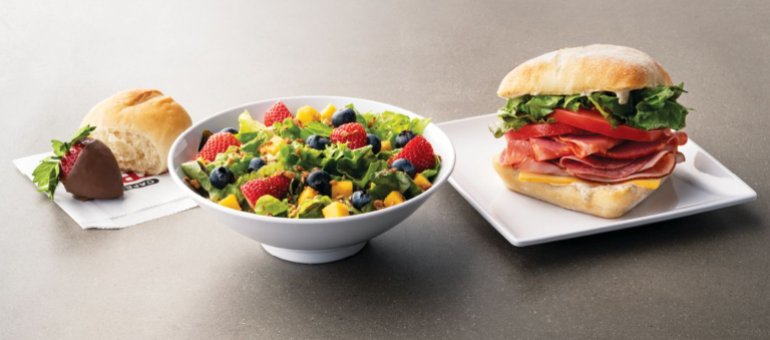
Here’s how Café Zupas was able to successfully build its own tech stack
- posted in: Portfolio
From: Nation’s Restaurant News
By: Joanna Fantozzi
The founders of the Utah-based soup and sandwich chain have backgrounds in tech and built custom AI-based systems instead of going with off the shelf
With so many technology vendors to choose from, it can be tempting to just start the process of building a tech stack from scratch with in-house technology. But is that even an option for the average emerging brand? The team behind Café Zupas – a 70-unit fast-casual soup and sandwich chain — has managed to successfully custom-build an AI-based tech stack that works for the brand’s specific needs.
The secret behind their DIY tech stack is that the founders of Café Zupas all have degrees and backgrounds in technology and approached the operations of their company from a tech-first perspective. However, with the right resources and team support, Café Zupas chief information officer Wes Beaman said that it’s possible for other restaurant brands to have success with building in-house technology, even without degrees in engineering.
“The biggest benefit is that we get to remove the handcuffs,” Beaman said. “We just redid our website, online ordering portal, and app. What we realized is the way we want these things to run would not work in a traditional template-based approach that most of these vendors provide. So, we built a tech stack that allows us to…innovate outside of the norms of the industry.”
Before delving into the world of DIY hospitality technology, Beaman said that the leadership team at Café Zupas did try off the shelf technology, but it did not work for their specific needs. For example, after starting off with Excel sheet-based scheduling, they wanted to modernize their scheduling process and began shopping around for a scheduling platform. After initially working with one company, they found it was too difficult to retrofit the software to be able to plug in how they do employee breaks and rotations.
“We thought, ‘this isn’t working, what can we do better?’” Beaman said. “We had a somewhat automated process using this off the shelf product to create schedules, but it took our managers three or more hours every week, and it took a long time for them to get the schedules out to the team members…. So, we took that process, brought it in house, and started using AI to fill those shifts. Now the process takes 45 minutes and is relatively pain-free.”
Besides AI scheduling features, Café Zupas’ tech stack includes an overarching operating system that they dubbed Control Center for Café Zupas. Inside the operating system, there are multiple applications and capabilities that are driven by AI projections models. The AI projection model can count the ingredients and items in the restaurant and tell the team what to prep that day based on what they need and already have. It also automatically prints out expiration stickers for ingredients. Wholesale product orders and office orders are also automated based on AI projections.
From a layman’s perspective, the back of house AI technology at Café Zupas works by training it to look at historical data and trends and then come up with a list of projections and predictions based on a number of factors.
“Our CEO was asking me for more and more data for his team to manually try and project store sales… but no person is ever going to be able to go through 70 stores for three different models every week and say, ‘the weather in Wisconsin is going to turn colder, which is going to impact soup sales,’” Beaman said. “We went AI because it’s more accurate…. The overarching driver for this technology is to get the freshest food to our guests…. And frankly, if you’re trying to do it the old fashioned way, you just can’t accomplish that.”
As for cost comparisons between an off-the-shelf tech stack and the one they built themselves, Beaman said that the two options are pretty comparable, and could save them a little more in the long-run (likely because they’d be saving on subscription costs). But even if the technology cost a little more than an off-the-shelf product, Beaman said it would be worth it. But in order to successfully create your own tech stack you need to invest a lot in a technology team that knows what they’re doing, and an executive team that will give them the support they need.
“I think the customers are a lot happier,” Beaman said. “Our whole goal is to provide an experience that other fast casuals can’t, which is fresh food prep in-restaurant that day. The bigger benefit on the back end is we’ve made systems simpler for our team…. So they can really focus on giving that guests that Grade A experience, and they’re not worried about how much they need to prep, how to schedule their team. The system does that for them.”
Contact Joanna at joanna.fantozzi@informa.com
